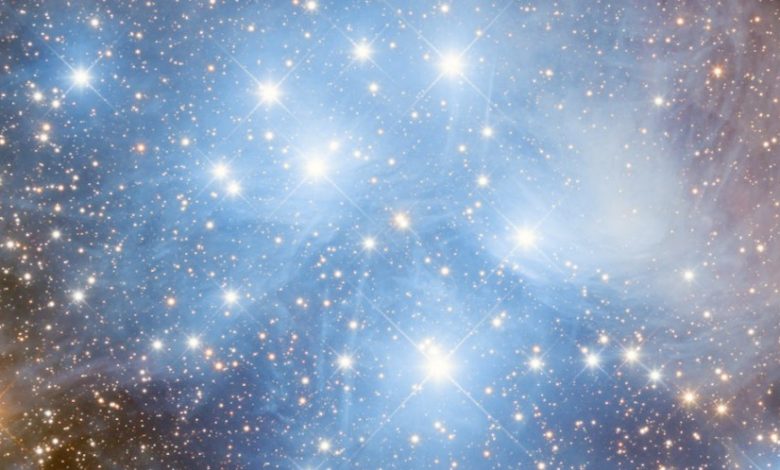Early astronomers

Observation history
People have interpreted patterns and images in the stars since ancient times.[1] This 1690 depiction of the constellation of Leo, the lion, is by Johannes Hevelius.[2]
Historically, stars have been important to civilizations throughout the world. They have been part of religious practices, used for celestial navigation and orientation, to mark the passage of seasons, and to define calendars.
Early astronomers recognized a difference between “fixed stars”, whose position on the celestial sphere does not change, and “wandering stars” (planets), which move noticeably relative to the fixed stars over days or weeks.[3] Many ancient astronomers believed that the stars were permanently affixed to a heavenly sphere and that they were immutable. By convention, astronomers grouped prominent stars into asterisms and constellations and used them to track the motions of the planets and the inferred position of the Sun.[1] The motion of the Sun against the background stars (and the horizon) was used to create calendars, which could be used to regulate agricultural practices.[4] The Gregorian calendar, currently used nearly everywhere in the world, is a solar calendar based on the angle of the Earth’s rotational axis relative to its local star, the Sun.
The oldest accurately dated star chart was the result of ancient Egyptian astronomy in 1534 BC.[5] The earliest known star catalogues were compiled by the ancient Babylonian astronomers of Mesopotamia in the late 2nd millennium BC, during the Kassite Period (c. 1531–1155 BC).[6]
The first star catalogue in Greek astronomy was created by Aristillus in approximately 300 BC, with the help of Timocharis.[7] The star catalog of Hipparchus (2nd century BC) included 1020 stars, and was used to assemble Ptolemy’s star catalogue.[8] Hipparchus is known for the discovery of the first recorded nova (new star).[9] Many of the constellations and star names in use today derive from Greek astronomy.
In spite of the apparent immutability of the heavens, Chinese astronomers were aware that new stars could appear.[10] In 185 AD, they were the first to observe and write about a supernova, now known as the SN 185.[11] The brightest stellar event in recorded history was the SN 1006 supernova, which was observed in 1006 and written about by the Egyptian astronomer Ali ibn Ridwan and several Chinese astronomers.[12] The SN 1054 supernova, which gave birth to the Crab Nebula, was also observed by Chinese and Islamic astronomers.[13][14][15]
Medieval Islamic astronomers gave Arabic names to many stars that are still used today and they invented numerous astronomical instruments that could compute the positions of the stars. They built the first large observatory research institutes, mainly for the purpose of producing Zij star catalogues.[16] Among these, the Book of Fixed Stars (964) was written by the Persian astronomer Abd al-Rahman al-Sufi, who observed a number of stars, star clusters (including the Omicron Velorum and Brocchi’s Clusters) and galaxies (including the Andromeda Galaxy).[17] According to A. Zahoor, in the 11th century, the Persian polymath scholar Abu Rayhan Biruni described the Milky Way galaxy as a multitude of fragments having the properties of nebulous stars, and gave the latitudes of various stars during a lunar eclipse in 1019.[18]
According to Josep Puig, the Andalusian astronomer Ibn Bajjah proposed that the Milky Way was made up of many stars that almost touched one another and appeared to be a continuous image due to the effect of refraction from sublunary material, citing his observation of the conjunction of Jupiter and Mars on 500 AH (1106/1107 AD) as evidence.[19] Early European astronomers such as Tycho Brahe identified new stars in the night sky (later termed novae), suggesting that the heavens were not immutable. In 1584, Giordano Bruno suggested that the stars were like the Sun, and may have other planets, possibly even Earth-like, in orbit around them,[20] an idea that had been suggested earlier by the ancient Greek philosophers, Democritus and Epicurus,[21] and by medieval Islamic cosmologists[22] such as Fakhr al-Din al-Razi.[23] By the following century, the idea of the stars being the same as the Sun was reaching a consensus among astronomers. To explain why these stars exerted no net gravitational pull on the Solar System,
